Shortly after writing our post on nearly reaching the 2000 point mark on our DXCC Challenge, we suffered a number of antenna failures on our main HF mast. The mast houses our OB1-4030 rotary dipole for 30 and 40 m, as well as the Force12 5BA multiband yagi for 10 to 20 m. This post details our journey towards getting things back in order.
The worst of the faults occurred on the rotary dipole. Here, the standing wave ratio (SWR) maxed out, and rendered the antenna completely inoperable. Something had to be done.
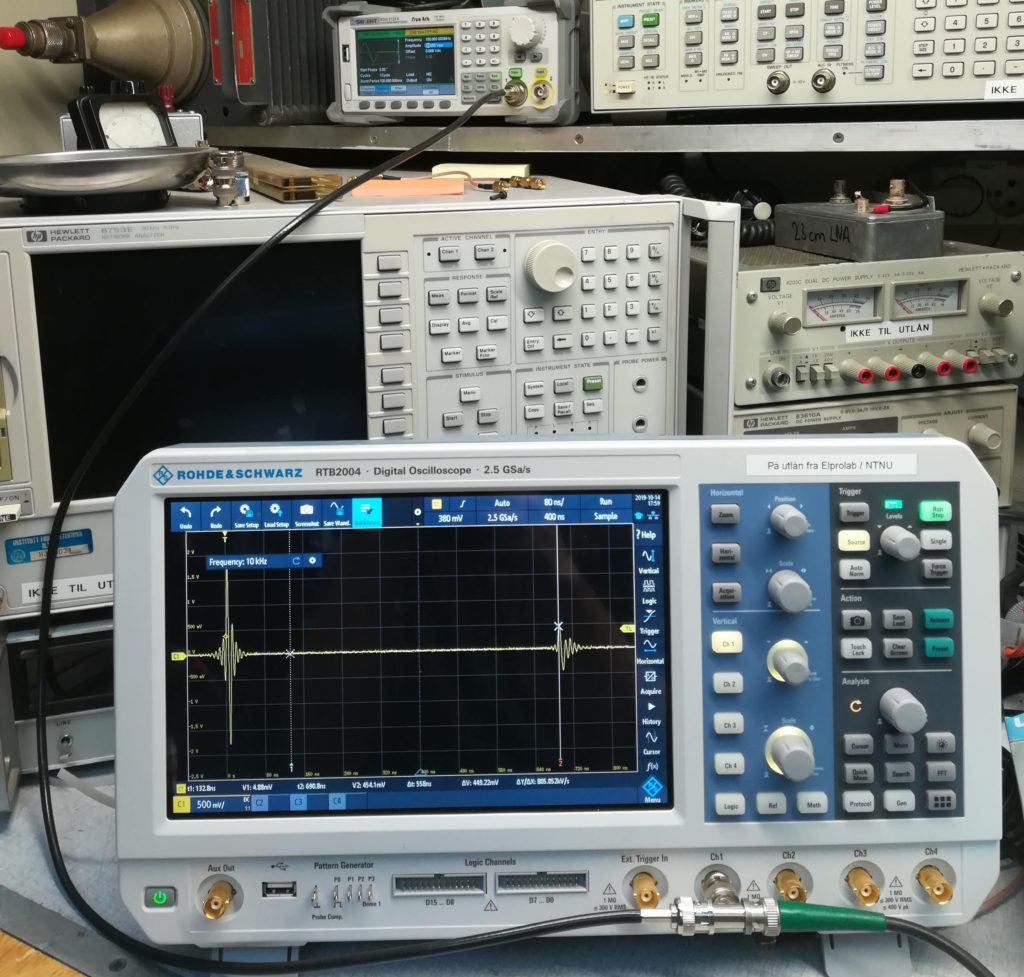
To diagnose the fault, we used a time domain reflectometer (TDR) setup (which we have written about in an earlier post). Using this setup, we found that there was an interruption in the feed 55 m down the line. From previous experience, we know that 55 m is roughly at the end of coax – so were on the lookout for problems in this area.
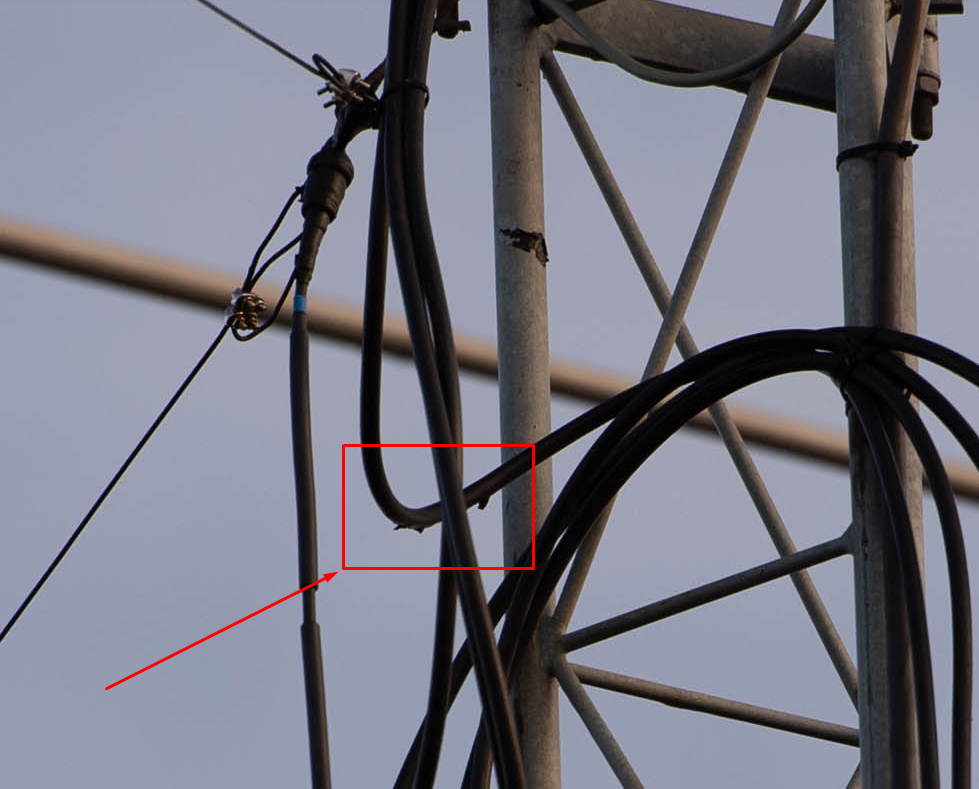
Fault 1: Damaged coax. Photo: foto.samfundet.no 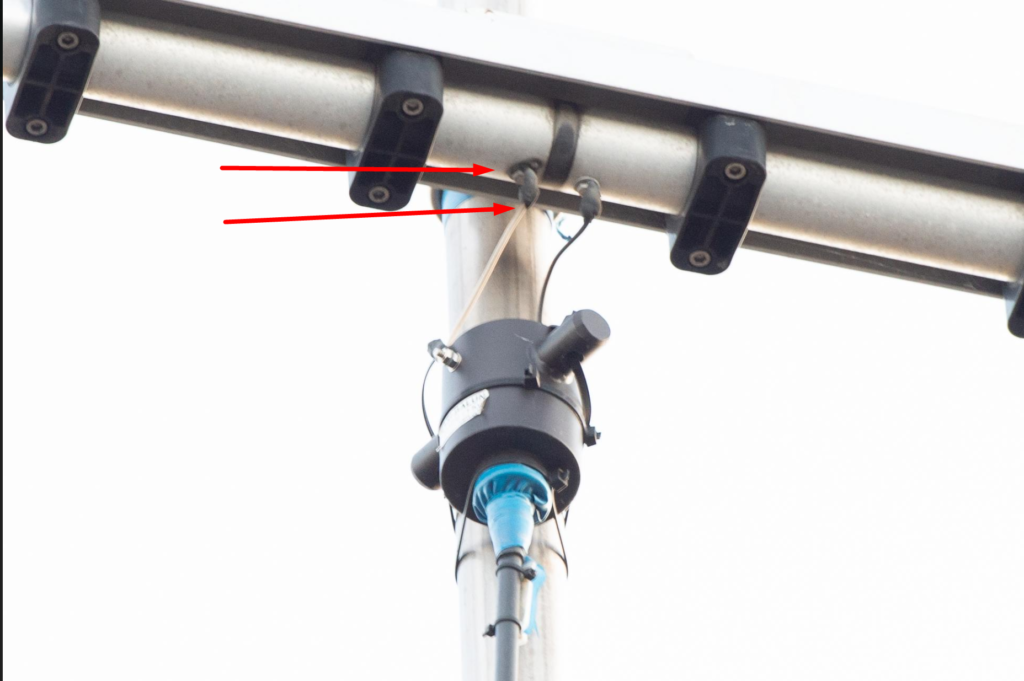
Fault 2: Possible arcover? Photo: foto.samfundet.no 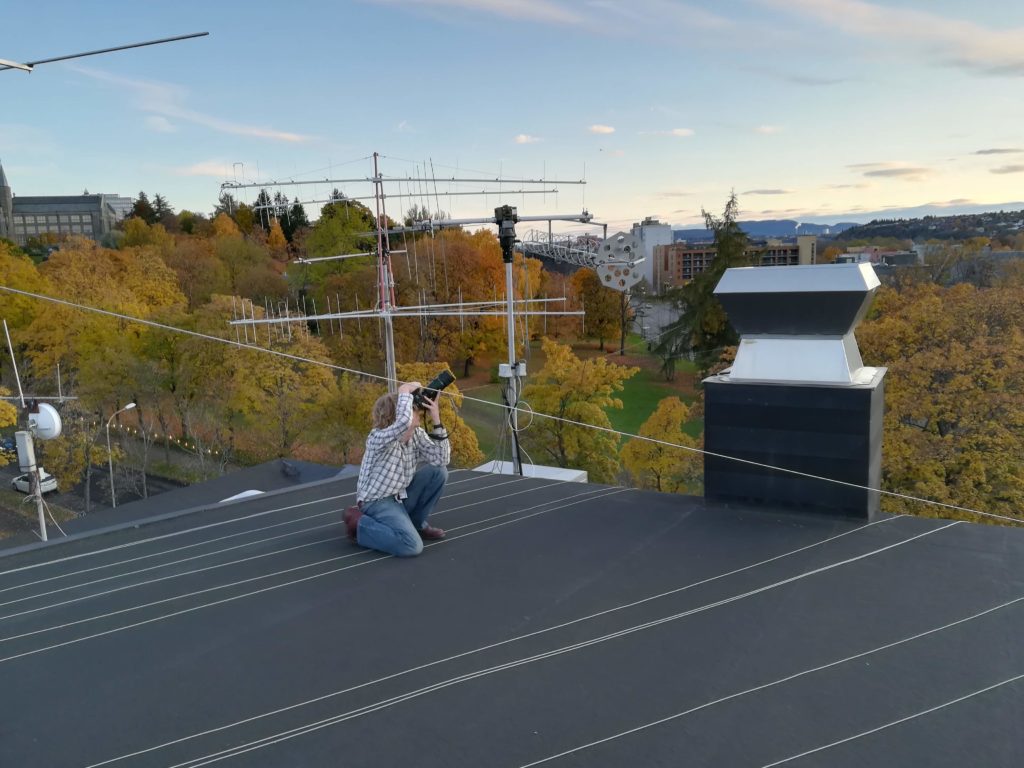
Fotogjengen in action.
With some help from our good friends at Fotogjengen, we were able to inspect the antenna without climbing by using a high resolution image sensor and a telephoto lens. We found two probable faults using this method, and one of them did not require lowering the mast. We had our first target: replacing the damaged coax.
We climbed the tower and removed the broken coaxial piece. Next, we patched in a new piece of coax by crimping on new connectors. After this strenuous climbing session, we discovered to our dismay that the broken coax had actually been working ~fine. Further, the coax did not actually belong to the OB1-4030 antenna, but rather to the 15 m feed of the Force12 5BA antenna. In effect, the SWR on 15 m was now degraded to 2:1 due to some sub-optimal crimping action by yours truly.
We finally realized that it was time to take down the mast to fix the problems properly. We have been dreading taking down the mast for some time, due to a newly installed ventilation aggregate, which we suspected might get in the way of lowering the mast.
Taking down the mast is a somewhat complicated procedure:
1. Rotate the antenna so that it will end up flat against the roof.
2. Climb the antenna, loosen some bolts, and rotate the Force12 5BA yagi 90 degrees in azimuth. Re-tighten the bolts.
3. Loosen the elevation bolts, and rotate the Force12 5BA. All the antennas can now lay flat-ish against the roof.
4. Lower the mast.

This Saturday we spent the day working on the mast and antennas. Luckily, the ventilation aggregate was less of an issue than we anticipated. Work went quite smoothly, apart from the usual snags (rusty bolts, cold fingers, and such).
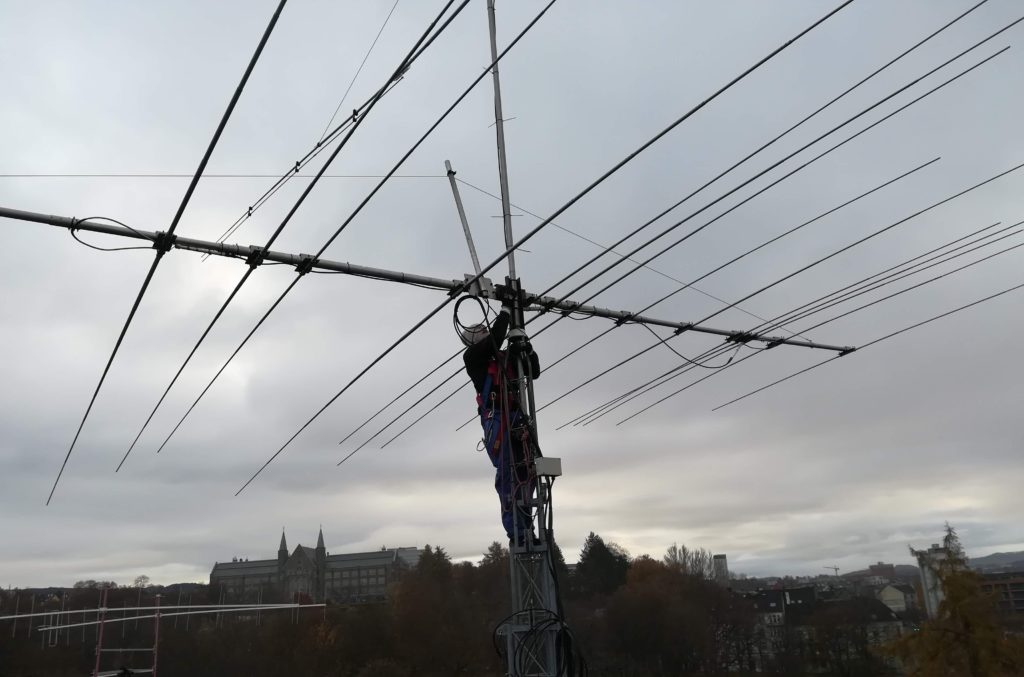
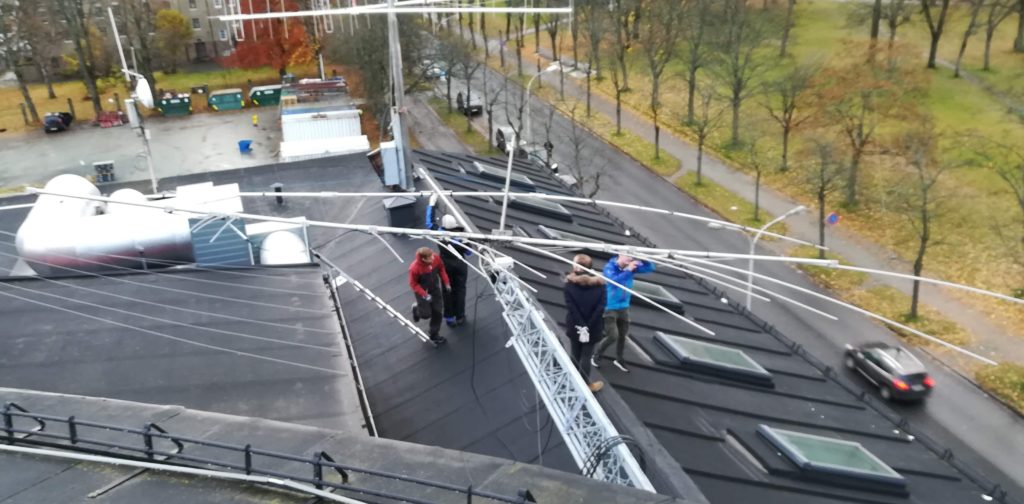
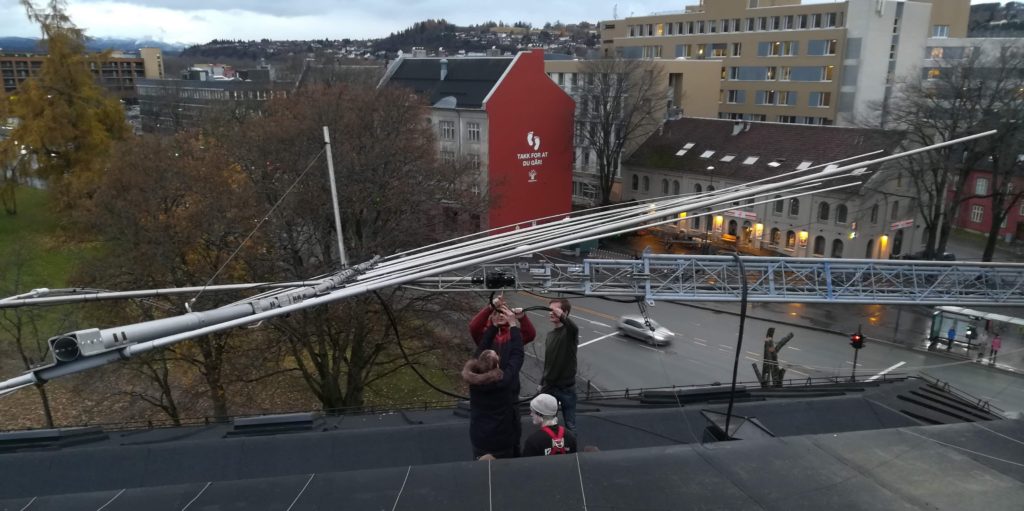
For 15 m, we swapped the coaxial cable for a new one. On 40 m the broken part turned out to be the balun. We did not have a new one available, but we did have some coax and a number of FT240 toroids of an unknown mix (probably #31 or #43). Some hack-and-slashing later, we had a balun that measured OK on our VNA.
After hoisting the mast we did some quick measurements, and luckily everything was back to par. All antennas in the mast are now resonant close to 1:1 SWR somewhere in their respective bands. This means that we are once again able to make contacts. Thanks to everyone who helped make us QRV.
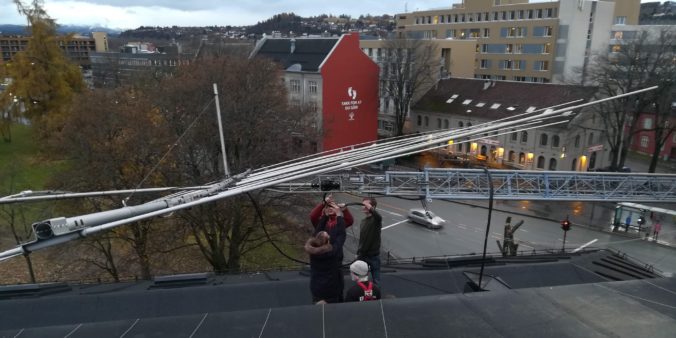
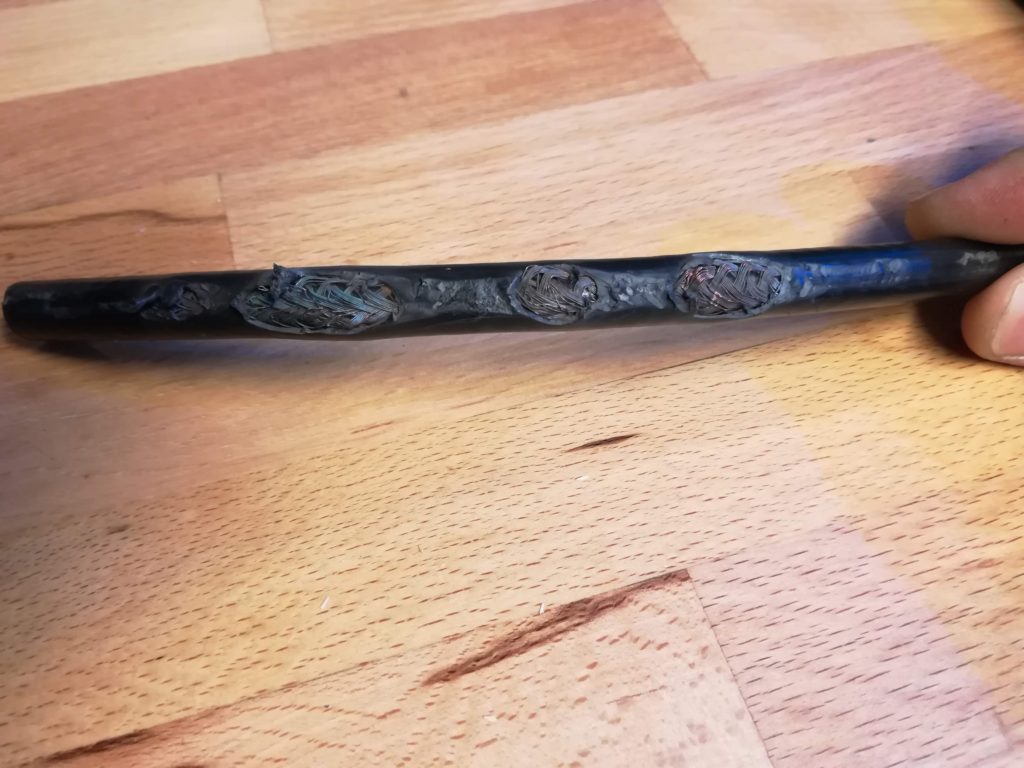
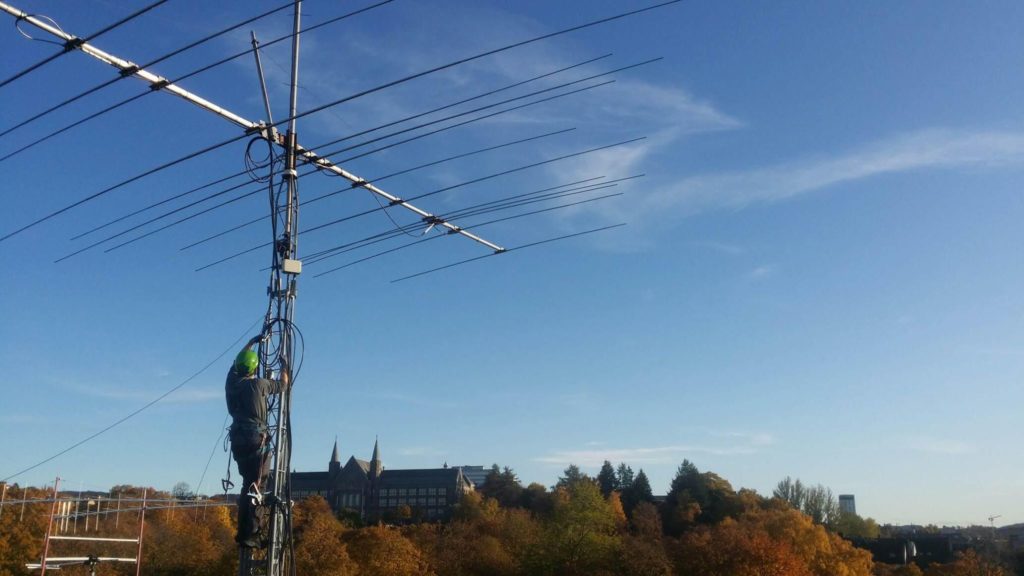
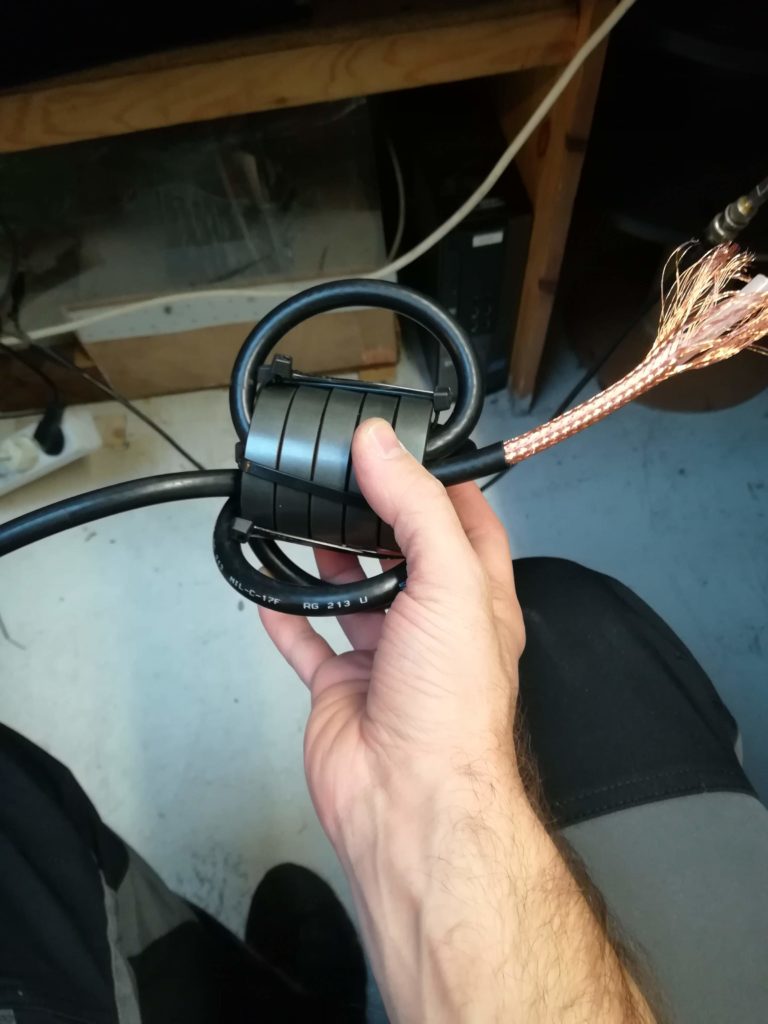
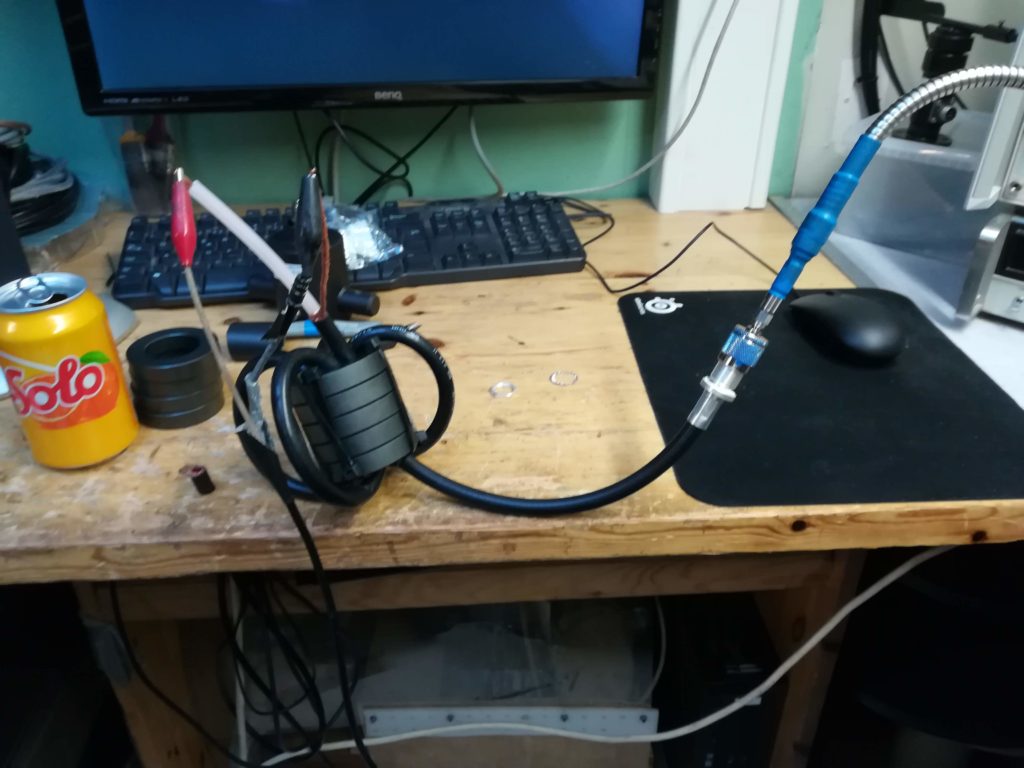
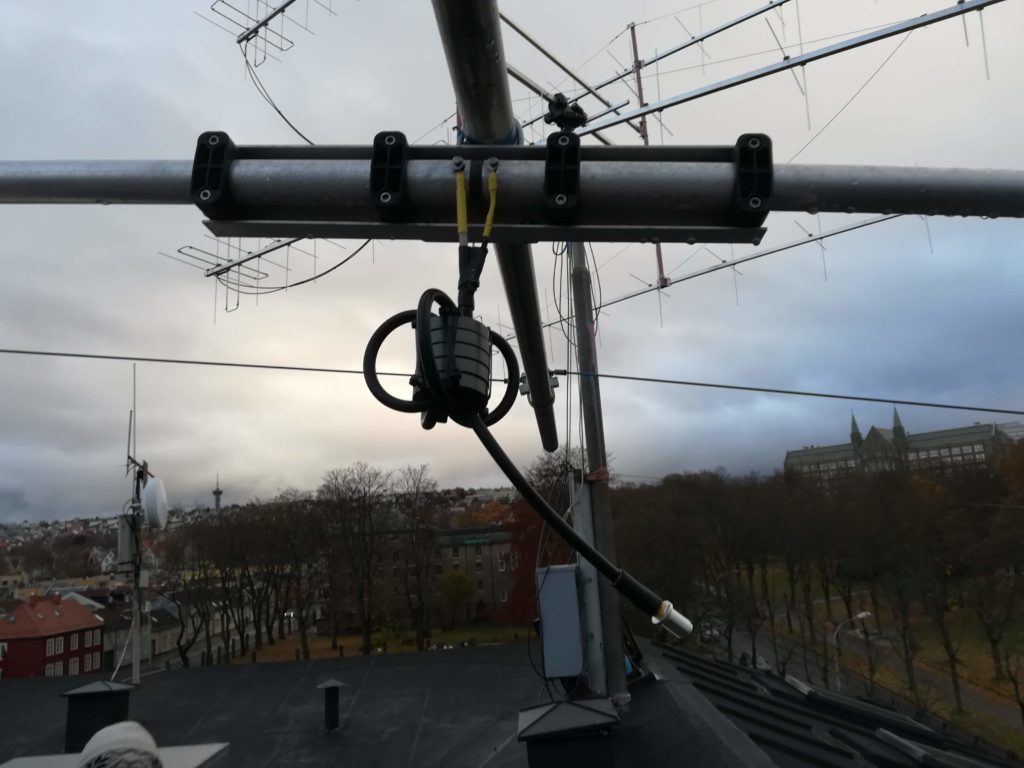

Leave a Reply